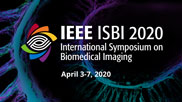Collection:

Cardiac magnetic resonance imaging (CMR) is a noninvasive imaging modality that provides a comprehensive evaluation of the cardiovascular system. The clinical utility of CMR is hampered by long acquisition times, however. In this work, we propose and validate a plug-and-play (PnP) method for CMR reconstruction from undersampled multi-coil data. To fully exploit the rich image structure inherent in CMR, we pair the PnP framework with a deep learning (DL)-based denoiser that is trained using spatiotemporal patches from high-quality, breath-held cardiac cine images. The resulting "PnP-DL" method iterates over data consistency and denoising subroutines. We compare the reconstruction performance of PnP-DL to that of compressed sensing (CS) using eight breath-held and ten real-time (RT) free-breathing cardiac cine datasets. We find that, for breath-held datasets, PnP-DL offers more than one dB advantage over commonly used CS methods. For RT free-breathing datasets, where ground truth is not available, PnP-DL receives higher scores in qualitative evaluation. The results highlight the potential of PnP-DL to accelerate RT CMR.
- IEEE MemberUS $11.00
- Society MemberUS $0.00
- IEEE Student MemberUS $11.00
- Non-IEEE MemberUS $15.00
Videos in this product
Free-Breathing Cardiovascular MRI Using a Plug-And-Play Method with Learned Denoiser
Cardiac magnetic resonance imaging (CMR) is a noninvasive imaging modality that provides a comprehensive evaluation of the cardiovascular system. The clinical utility of CMR is hampered by long acquisition times, however. In this work, we propose and validate a plug-and-play (PnP) method for CMR reconstruction from undersampled multi-coil data. To fully exploit the rich image structure inherent in CMR, we pair the PnP framework with a deep learning (DL)-based denoiser that is trained using spatiotemporal patches from high-quality, breath-held cardiac cine images. The resulting "PnP-DL" method iterates over data consistency and denoising subroutines. We compare the reconstruction performance of PnP-DL to that of compressed sensing (CS) using eight breath-held and ten real-time (RT) free-breathing cardiac cine datasets. We find that, for breath-held datasets, PnP-DL offers more than one dB advantage over commonly used CS methods. For RT free-breathing datasets, where ground truth is not available, PnP-DL receives higher scores in qualitative evaluation. The results highlight the potential of PnP-DL to accelerate RT CMR.
 Cart
Cart Create Account
Create Account Sign In
Sign In
